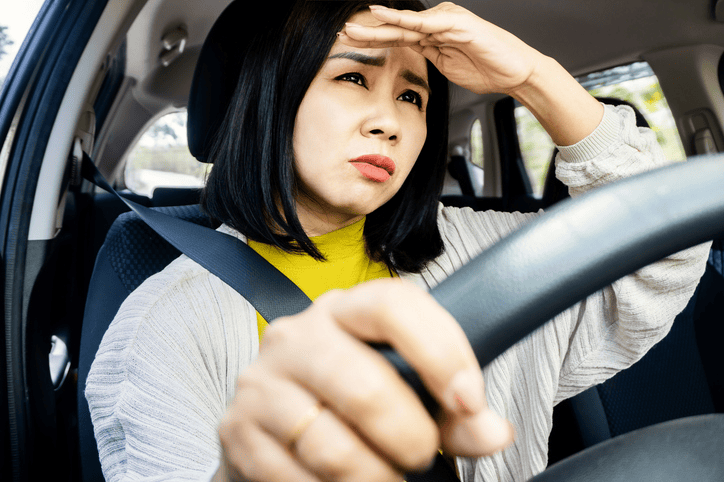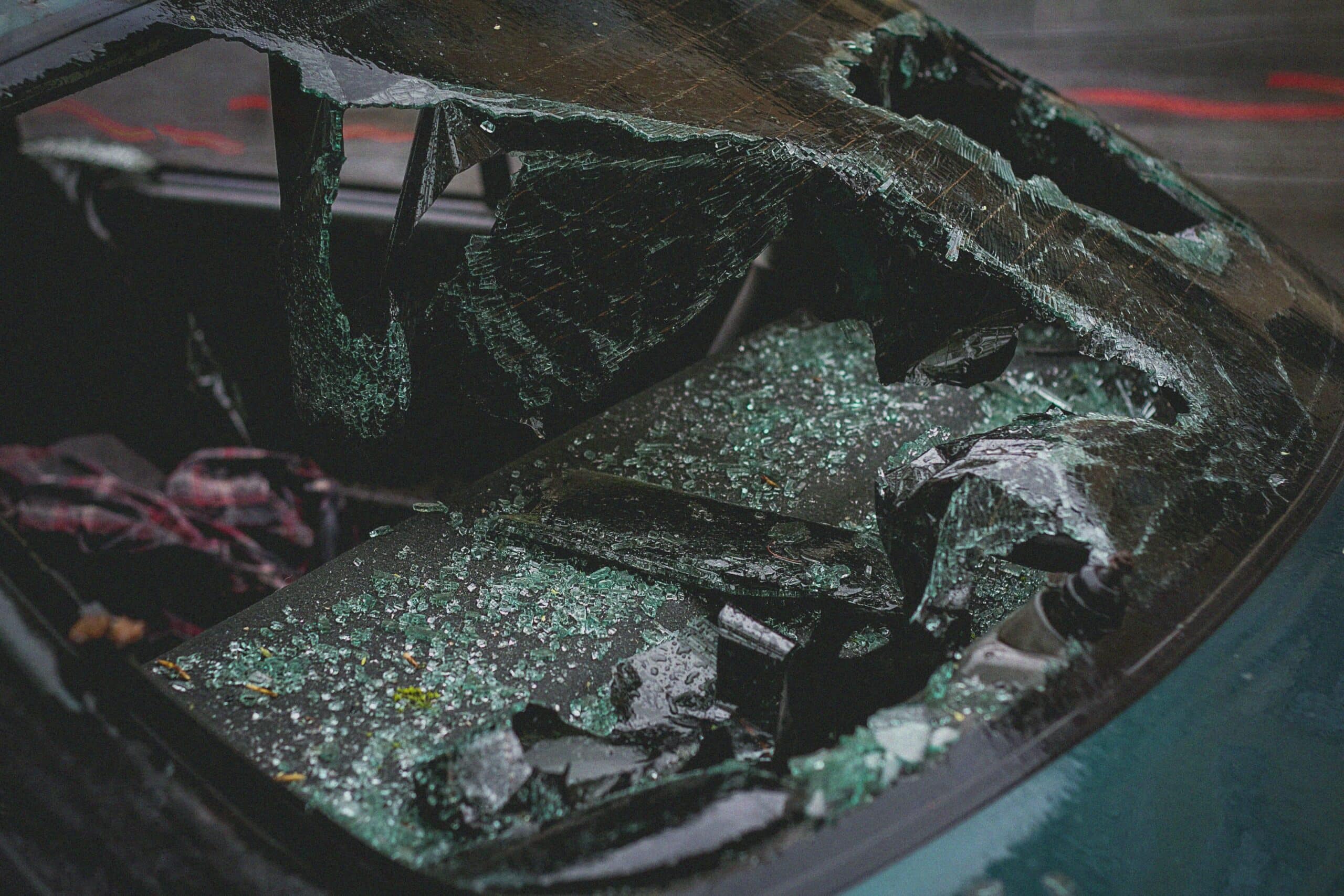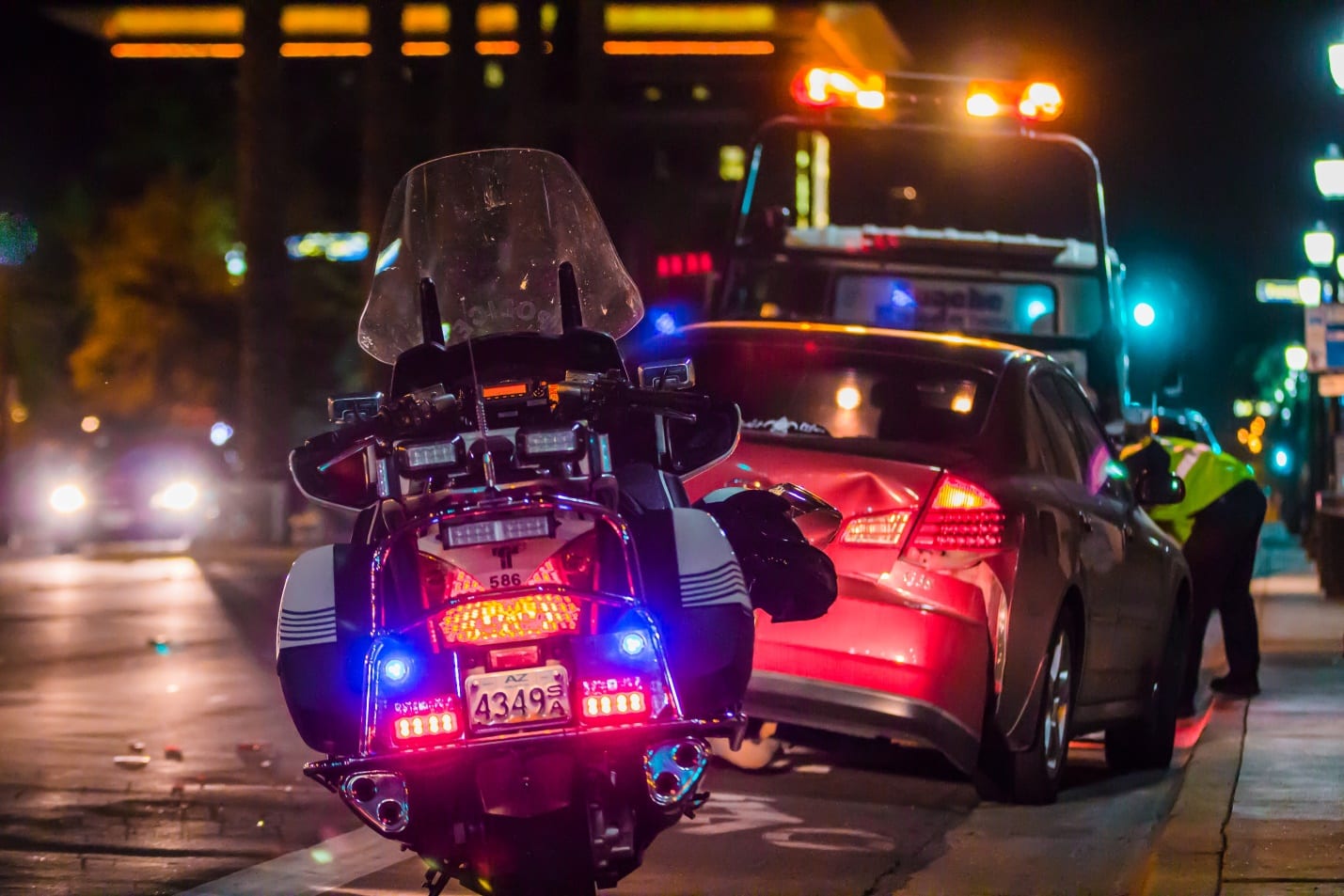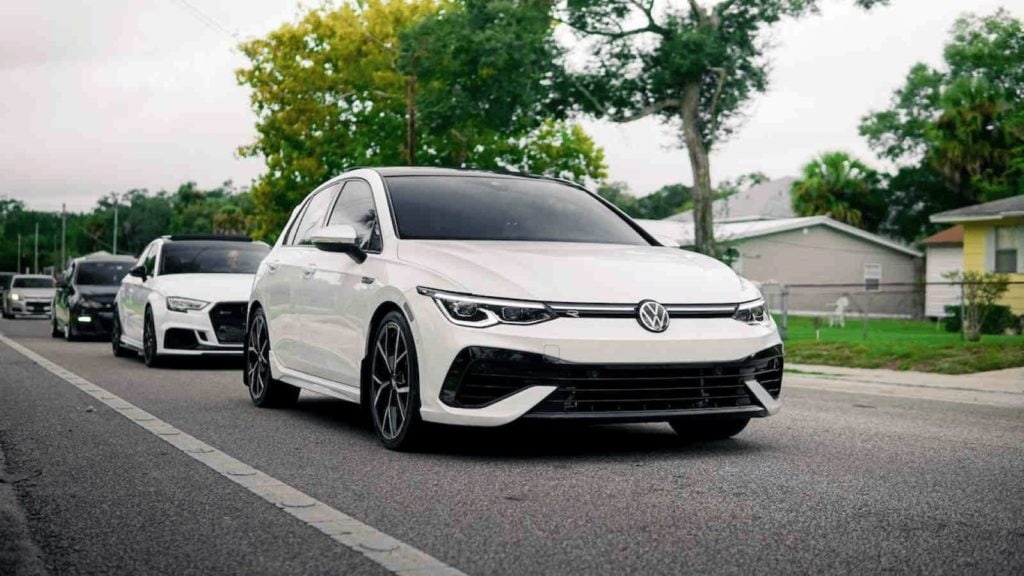
When it comes to car accidents, few scenarios are as common and frustrating as rear-end collisions. These accidents occur when one vehicle strikes the back of another, often leading to a slew of questions about liability and who should be held responsible for the damages and injuries involved. In this article, we’ll delve into the complexities of rear-end collisions and help you understand the factors that influence determining fault. Whether you’re the rear driver, the lead driver, or a concerned party, this guide will shed light on the legal aspects of rear-end accidents in Nevada.
Understanding Rear-End Collisions
What Are Rear-End Collisions?
Rear-end collisions, sometimes referred to as “fender-benders,” are among the most prevalent types of car accidents. These incidents typically involve one vehicle striking another from behind. Although they are often considered less severe than other types of car accidents, they can still result in significant property damage and injuries.
What Causes Rear-End Collisions?
Distracted driving: Texting, phone use, adjusting the radio, or in-car entertainment systems can lead to rear-end collisions as drivers fail to notice stopped or slowed vehicles.
Tailgating: Following too closely reduces reaction time, especially when the lead driver stops suddenly, resulting in rear-end collisions.
Speeding: Excessive speed increases collision force and reduces reaction time, making rear-end collisions more likely.
Sudden stops: Lead drivers making sudden stops without warning, sometimes due to brake checking, can catch following drivers off guard.
Aggressive driving: Behaviors like weaving through traffic, cutting off other drivers, and road rage can lead to rear-end collisions.
Impaired driving: Alcohol or drug impairment impairs judgment and reaction time, increasing the risk of rear-end collisions.
Brake failure: Mechanical brake failures result in an inability to stop in time, leading to rear-end collisions.
Fatigue: Fatigued drivers have reduced attention and reaction times, increasing the risk of rear-end collisions.
Inattentiveness to traffic signals: Ignoring traffic signals, stop signs, and road signage can lead to rear-end collisions at intersections.
Vehicle defects: Mechanical defects, such as brake failure or malfunctioning brake lights, in a vehicle’s braking system can cause rear-end collisions.
What Is the Role of Lead Driver in Rear-End Collision?
In a rear-end collision, the lead driver is the person operating steering wheel of the vehicle in front. This driver’s actions and decisions can play a crucial role in determining fault. Some common considerations include:
Brake Checking:
If the lead driver suddenly slams on the brakes without a valid reason or intention to stop safely, they might contribute to the accident at fault driver’s cause.
Use of Turn Signals:
Failing to use turn signals or making abrupt lane changes without signaling can create confusion and potentially contribute to an accident.
Maintaining Adequate Space:
Lead drivers are expected to maintain a safe following distance. This involves trailing driver keeping enough space between their vehicle and the one in front to allow for safe braking in case of emergencies.
Brake Lights:
Properly functioning brake lights are essential for alerting the following driver to slow down or stop. Non-functional brake lights could reduce the following driver’s reaction time.
What Are the Responsibilities of Rear Driver in Rear-End Collision?
As the rear driver, you also have specific responsibilities, and your actions can influence the outcome of a rear-end collision case. Here are some factors to consider:
Safe Distance:
Maintaining an adequate following distance is not solely the responsibility of the lead driver. Rear drivers are also expected to keep enough space to react to sudden stops safely.
Paying Attention:
Distracted driving is a significant concern in rear-end collisions. Drivers who are not paying attention to the road are more likely to rear-end the vehicle in front.
Speed and Aggressive Driving:
Excessive speed and aggressive driving behaviors, such as tailgating and weaving between lanes, can increase the driver error likelihood of causing a rear-end collision.
Determining Fault in a Rear-End Collision
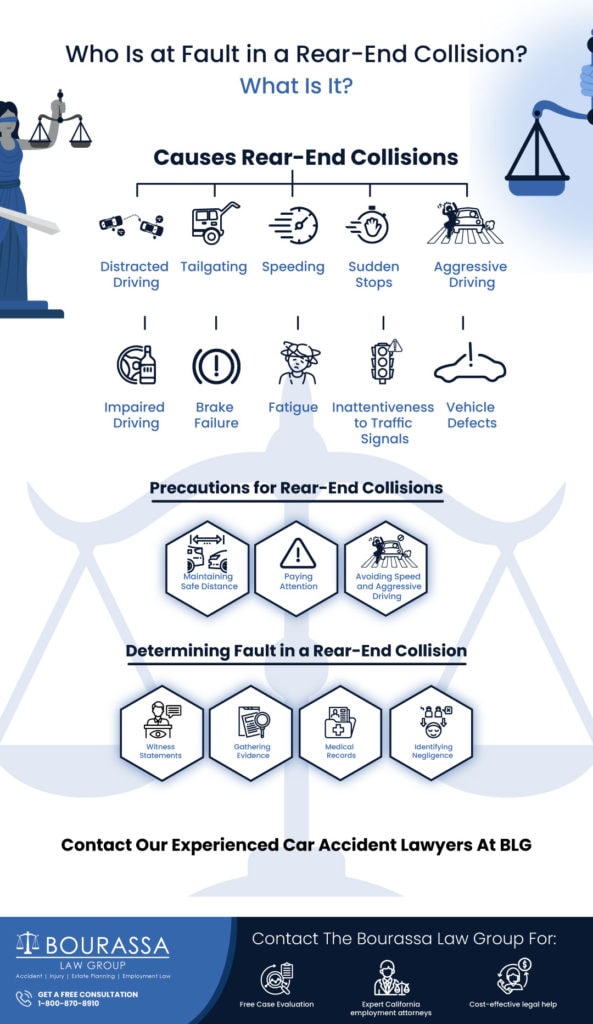
In general, rear-end collisions are typically the fault of the driver who strikes the vehicle in front of them. However, this isn’t an absolute rule, and there are exceptions to consider. To determine fault when a rear-end collision occurs, legal teams and insurance companies often conduct a thorough investigation. Some key aspects of this process include:
Witness Statements:
Eyewitness accounts can provide valuable insight into the circumstances leading up to the accident. These statements help establish what happened and who may be at fault.
Gathering Evidence:
This involves collecting evidence from the scene, such as photographs, videos of the crash, skid marks, and vehicle damage. The evidence can help reconstruct the accident and determine fault.
Medical Attention:
Seeking immediate medical attention is essential if you’ve ever been rear-ended. Medical records can document injuries and their relation to the accident.
Negligence and Distracted Driving:
Determining whether the rear driver was negligent, engaged in distracted driving, or exhibited aggressive behavior is critical in assessing fault.
How Does the Car Accident Attorney Help?
If you’re involved in a rear-end collision and need assistance with your accident claim, consulting a car accident lawyer can be beneficial. These legal experts specialize in motor vehicle accidents and an injury law firm can help you navigate the complex legal processes. They can help to prove fault, negotiate with insurance companies, and, if necessary, represent your interests in court.
Recovering Damages
In Nevada, if you’ve been a negligent driver deemed responsible for a rear-end collision, it’s essential to understand the implications. On the other hand, if you’re the victim of a rear-end collision, you may be entitled to compensation for your medical expenses, property damage, and other related costs. An experienced law firm can assist in the process of recovering these damages and making the responsible party accountable for their actions
Contact Our Experienced Car Accident Lawyers At BLG
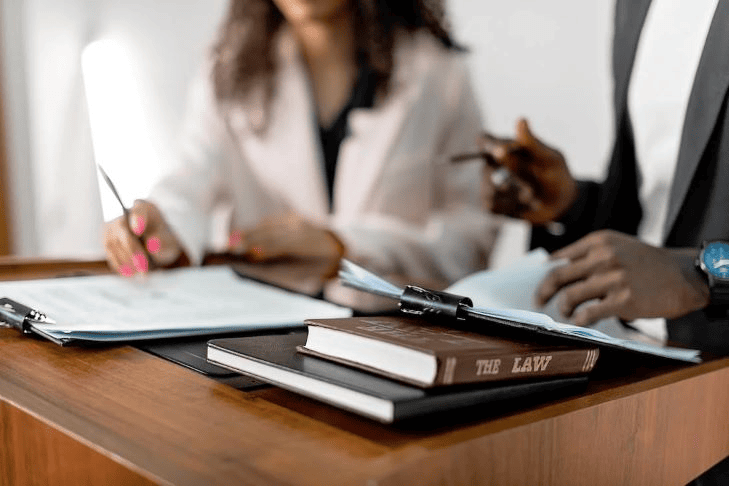
Rear-end collisions can be a source of confusion and frustration, but with the right knowledge and legal assistance, you can navigate the complex process of determining fault and recovering damages. Remember that each case is unique, and liability is not always straightforward. If you’ve been involved in a rear-end collision, don’t hesitate to seek medical attention and consult with a car accident attorney. Our legal team is here to guide you through the entire process, ensuring that you receive the compensation you need to move forward.
Dealing with the aftermath of a rear-end collision can be complex. If you’ve been involved in such an accident in Las Vegas and need legal guidance, don’t hesitate to reach out to our experienced car accident lawyers at BLG.
Our law firm specializes in personal injury cases, including a rear-end accident. We understand the intricacies of Nevada’s laws and regulations, and our entire team of lawyers is dedicated to helping you establish fault, gather evidence, and recover damages. With a thorough investigation and the right legal support, you can receive the compensation you deserve.
Contact our amazing team for a free consultation appointment today!
Frequently Asked Questions:
What is a rear end collision and how does it happen?
A rear end collision is a type of car accident that occurs when one vehicle collides with the back end of another vehicle. These accidents are typically caused by driver error, such as distracted driving, tailgating, or brake light failure. However a common question is typically, “Who is at fault in a rear end collision?”. Rear end collisions can be very serious, often resulting in injuries to the neck and back. If you have been involved in a rear end collision, it is important to seek medical attention immediately and to contact a personal injury attorney who can help you file an insurance claim.
Who is typically at fault in a rear end collision, the driver in front or the driver behind them?
Personal injury attorneys will often tell you that rear end crashes are not always as simple as they may seem. In order to determine who is at fault in a rear end crash, it is important to gather all of the evidence and to speak with witnesses. Often, the driver in front is not completely at fault, and the driver behind may be found partially or even fully at fault. For example, if the driver in front brake checked the driver behind, that driver may be found at fault. However, if the driver behind was not paying attention and rear ended the car in front of them, that driver would be found at fault. Ultimately, it is important to speak with an attorney to review all of the evidence and to determine who is truly at fault.
What are some steps you can take to avoid being involved in a rear end collision yourself?
Avoiding distractions while driving is the best way to avoid being involved in a rear end collision. While it may be tempting to check your phone or fiddle with the radio while behind the wheel, doing so takes your attention off of the road and increases your chances of missing something important. In addition, you should always be aware of what is going on around you and never assume that other drivers will stop in time. If you are following too closely, you may not have time to react if the car in front of you suddenly stops. By remaining alert and focused while driving, you can help to prevent rear end collisions.
If you are involved in a rear end collision, what should you do next?
If you are involved in a rear end collision, the first thing you should do is get the names and phone numbers of any witnesses. Once you have done that, do not admit fault to anyone. It is important that you talk to an attorney before you discuss anything with your insurance company. If you do not, you could say something that could be used against you later. After you have talked to an attorney, then you can contact your insurance company and let them know what happened.
What are the consequences of being found at fault in a rear end collision accident?
If you are found at fault in a rear-end accident, there can be several consequences. Your insurance rates may increase, and the damaged party may pursue you personally for damages in court. In some cases, you may also be ticketed by the police. While rear-end collisions are often minor accidents, they can still cause significant damage to both cars and injuries to the occupants. If you are involved in a rear-end collision, it is important to exchange insurance information with the other driver and to contact your insurance company as soon as possible.
